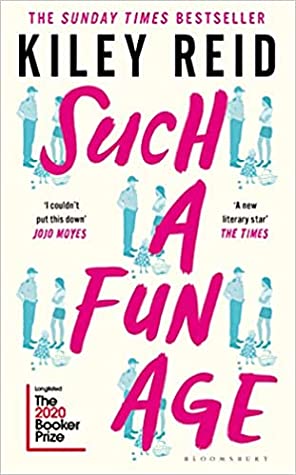
Today’s post is by retired doctor turned writer Sandra Eliason.
When I hung up my stethoscope in 2017, I started writing, believing that my 30-plus years of chart notes, limited as they were, had kept me somewhat in practice. My first degree was in English, and most of my years as a doctor were before computers, when the chart wasn’t automated fill-in-the-blank, and I had an opportunity to tell a patient’s story. Winning the 2016 Minnesota Medicine magazine writing contest encouraged me to go for it.
I soon learned, however, that chart writing and creative writing were two entirely separate endeavors. My career had required me to practice “just the facts, ma’am.” Now, descriptive details of sight and sound, taste and smell were not only important, but necessary to set a scene. To learn how, I took two creative writing classes at the University of Minnesota, signed up for online courses, went to writing conferences, took a year-long memoir-writing course, and attended workshops. I added several writing intensives. All were helpful, and my writing grew. Publication in Best American Essays 2023 encouraged me again. Then, rejections began piling up, convincing me my writing wasn’t “there” yet: I must need more help.
Where to turn next? I found multiple intensives advertised in wonderful and even exotic locations, with excellent teachers. Low-res MFAs beckoned. Residencies advertised. How to choose from the offerings of excellent instructors in enticing venues that would meet my specific needs?
Then I saw Rebirth Your Writing with Allison K Williams aboard the Queen Mary 2, with three additional fabulous teachers—Dinty W. Moore, Amy Goldmacher, and, finally, Jane Friedman. The format intrigued me: multiple teachers, multiple days, one location. A whole week to learn from four people with different perspectives and areas of expertise, and nowhere to go except aboard the ship.
This course design presented opportunities not usually available. Each morning in a combined session, one or more instructors led us to explore setting priorities for our creative life, choosing and using social media, crafting compelling first pages, querying, or being present in your writing. Each instructor made available added one-on-one time, to review specific pages or stuck points in a writer’s work. During breakout sessions, one could stay with a single instructor over the week, or choose a different one each day, depending on which topic addressed the writer’s needs. We participants sorted ourselves to fit our situation, thus also learning from each other—I heard conversations about sessions I did not attend, and which tidbits someone needed at this point in their writing.
Dinty W. Moore reviewed my lagging essays, Allison K Williams helped focus my query and a weak chapter, and Amy Goldmacher showed me how to refine chapter summaries, leaving my afternoons to learn from Jane.
Because of that unique structure, two things happened:
- The individual and collective wisdom of instructors, with their interactions, allowed each day’s topic to not only build on the previous day’s, but reinforce it, adding more depth and meaning. Reviewing my notes, I found similar themes recurring. Each time I jotted an idea down, I had increased understanding of the thing I needed to learn, stated in a new way. I had heard much of it before, but in a “one and done” session, it seemed to go into my ears and get lost in my brain. Seven days in the same space, hearing the same teachers’ wisdom, made it stick.
- Spending many days with the same instructor adds both complexity and clarity to the knowledge—complexity because as each topic builds, the nuances expand, and clarity, because as a topic is better defined, it becomes clearer. I chose my afternoons with Jane because hers was the information I needed most. And although some of it was repeated information for me, once the retreat was over I felt more ready to use the tools I was given than I had after any single course.
My retreat week began with an individual session with Jane. I had felt lost about where to enter social media. It seemed like a painful chore I had to do only because agents wanted it. I couldn’t force myself to engage, and the effort seemed futile. Half an hour with Jane refocused my understanding. She helped me see that I had a mission—I had just not defined it. Stating that mission, and learning how to focus social media around it, was exciting; my brain lit up with ideas. With that clarity, each day’s class added to my understanding of how multiple tools could advance my writing career: website best practices, social media use focused around mission, newsletter how-to, book launch ideas. A plethora of things built on each other over each day, and planted themselves in my brain, because they came with understanding of how they fit together, and were reinforced daily.
Writing conferences and classes are important opportunities I will continue to attend. But the format of multiple instructors + the same location + time = a multiplier effect of learning that a single event does not provide. Going forward, I will look for courses offering this method of learning, and I recommend it as an effective tool to advance one’s writing.
Want to read more about this specific retreat and the Queen Mary 2?
To learn about future opportunities, sign up for news from Allison K Williams’ Rebirth Your Book retreat series.
Sandra Hager Eliason is a retired Family Physician who has turned to writing full time. In 2016, she won the Minnesota Medicine Magazine writing contest. Her story, “Rough Ride,” originally published in West Trade Review, was in Best American Essays 2023, chosen by Vivian Gornick. She was also a finalist for the Plenitudes Prize 2023. Her essays have appeared in Bluestem, The Linden Review, and Brevity Blog and been anthologized in True Stories About Love Vol. 2, Pure Slush vol. 23, and others. She is a book reviewer for Hippocampus Magazine. Eliason is querying her completed memoir, Heal Me: Becoming a Doctor for all the Wrong Reasons (And Finding Myself Anyway). Look for her new newsletter, Medical Stories, coming soon from a being-redesigned website, dreliasonwriter.com.
Dr. Eliason lives with her husband in Minneapolis, Minnesota, where she has a garden in the summer and a cat to warm her lap in the winter.






